| Solar eclipse of October 21, 1949 | |
|---|---|
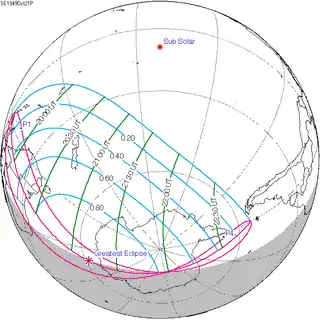 Map | |
| Type of eclipse | |
| Nature | Partial |
| Gamma | −1.027 |
| Magnitude | 0.9638 |
| Maximum eclipse | |
| Coordinates | 61°30′S 107°30′E / 61.5°S 107.5°E |
| Times (UTC) | |
| Greatest eclipse | 21:13:01 |
| References | |
| Saros | 152 (9 of 70) |
| Catalog # (SE5000) | 9397 |
A partial solar eclipse occurred on Friday, October 21, 1949. A solar eclipse occurs when the Moon passes between Earth and the Sun, thereby totally or partly obscuring the image of the Sun for a viewer on Earth. A partial solar eclipse occurs in the polar regions of the Earth when the center of the Moon's shadow misses the Earth.
Related eclipses
Solar eclipses 1946–1949
This eclipse is a member of a semester series. An eclipse in a semester series of solar eclipses repeats approximately every 177 days and 4 hours (a semester) at alternating nodes of the Moon's orbit.[1]
| Ascending node | Descending node | |||
|---|---|---|---|---|
| 117 | 1946 May 30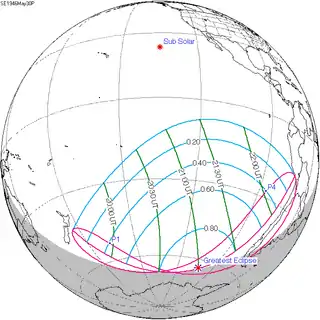 Partial |
122 | 1946 November 23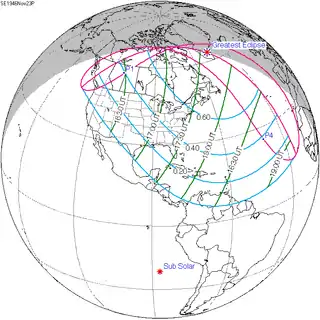 Partial | |
| 127 | 1947 May 20 Total |
132 | 1947 November 12 Annular | |
| 137 | 1948 May 9 Annular |
142 | 1948 November 1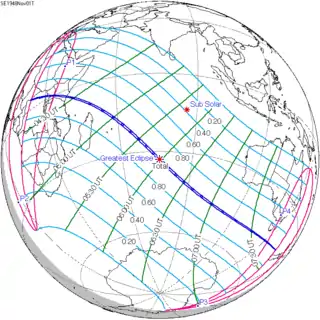 Total | |
| 147 | 1949 April 28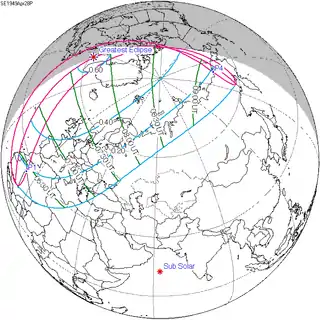 Partial |
152 | 1949 October 21 Partial | |
References
- ↑ van Gent, R.H. "Solar- and Lunar-Eclipse Predictions from Antiquity to the Present". A Catalogue of Eclipse Cycles. Utrecht University. Retrieved 6 October 2018.
External links
- Earth visibility chart and eclipse statistics Eclipse Predictions by Fred Espenak, NASA/GSFC
This article is issued from Wikipedia. The text is licensed under Creative Commons - Attribution - Sharealike. Additional terms may apply for the media files.
.jpg.webp)

